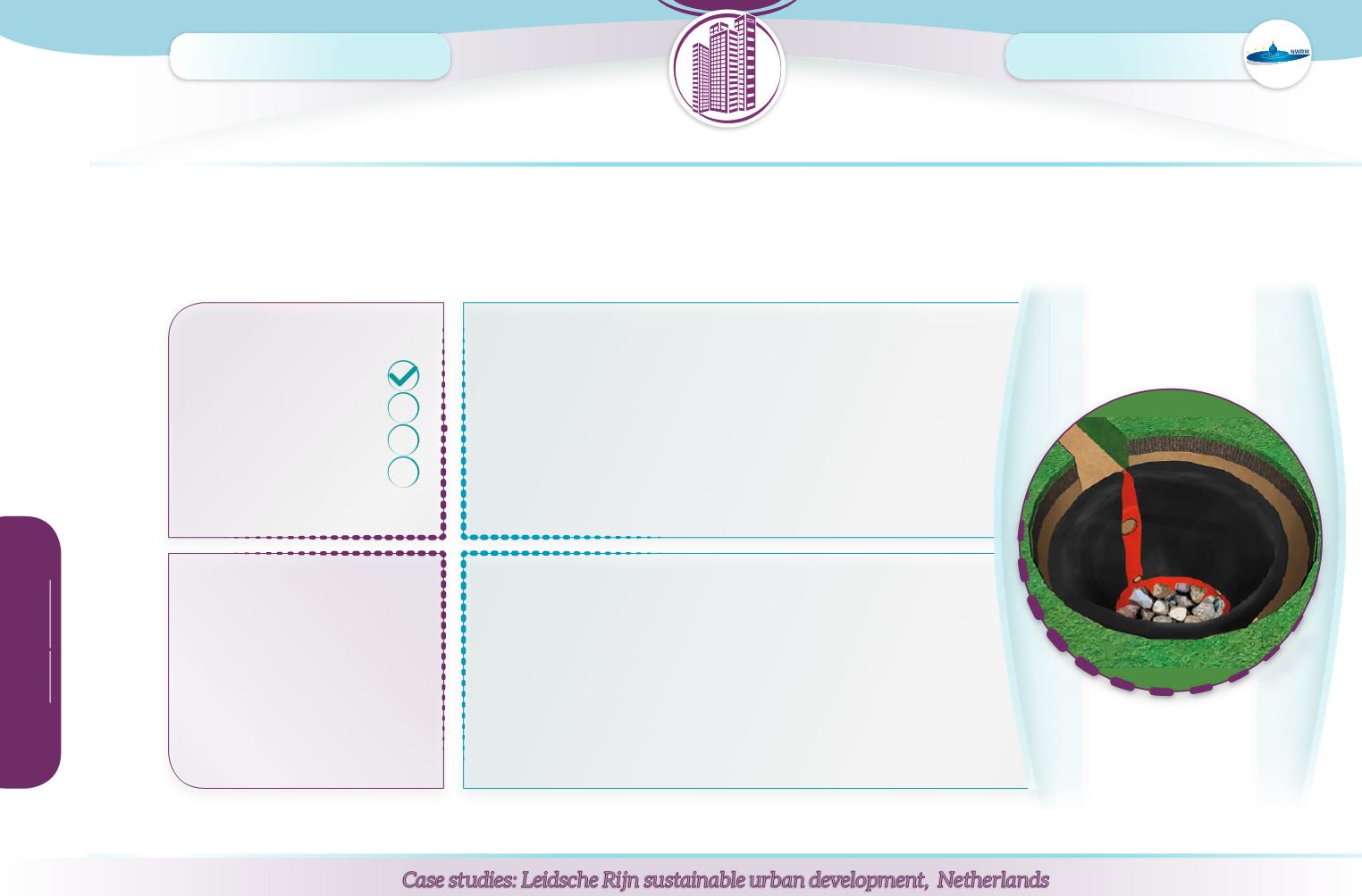
URBAN
Project funded
by theEU–DGEnvironment
L
andsurfacerelevant
forapplication
Artificial surface
Agriculture land
Forest and semi-natural areas
Wetlands
F
inancialcosts
(C
apital
,
operation
&
maintenance
)
Soakaway costs are generally greater than €90/m
2
of storage volume. Maintenance
cost is between €0.25-1.25/m
2
treated area.
Geotechnical investigations
are
required to confirm the land stability and underlying soil/geology conditions. These
may need to be intrusive and require analysis of land contamination to determine
the suitability of infiltration techniques.
D
esign
Soakaways may be a part of a wider
SuDS scheme
. They should not be used
within 5m of building
foundations
or roads or in areas of
unstable land
without considering their impacts, where the groundwater table is less than
1m below the base of the soakaway, in close proximity to other soakaways or
infiltration features, or where the risk of contamination to the
groundwater
is high. Runoff should
be pre-treated
to allow for removal of particulates and
oils. Regular inspection and maintenance is important.
S
cale
Soakaways are generally designed to
collect and infiltrate runoff from a small
area such as an individual house or
car-parking area.
Soakaways may also be applicable for artificial surfaces
in agricultural areas, such as farmyards.
Soakaways are buried chambers that store surface water and allow it to soak into the ground. They are typically square or circular excavations either filled with rubble or lined
with brickwork, pre-cast concrete or polyethylene rings/perforated storage structures surrounded by granular backfill. Soakaways provide storm water attenuation, and storm water
treatment. They also increase soil moisture content and help to recharge groundwater. They store rapid runoff from a single house or from a development and allow its efficient
infiltration into the surrounding soil.
Case studies: LeidscheRijn sustainableurbandevelopment, Netherlands
©
W
i
k
i
H
o
w


